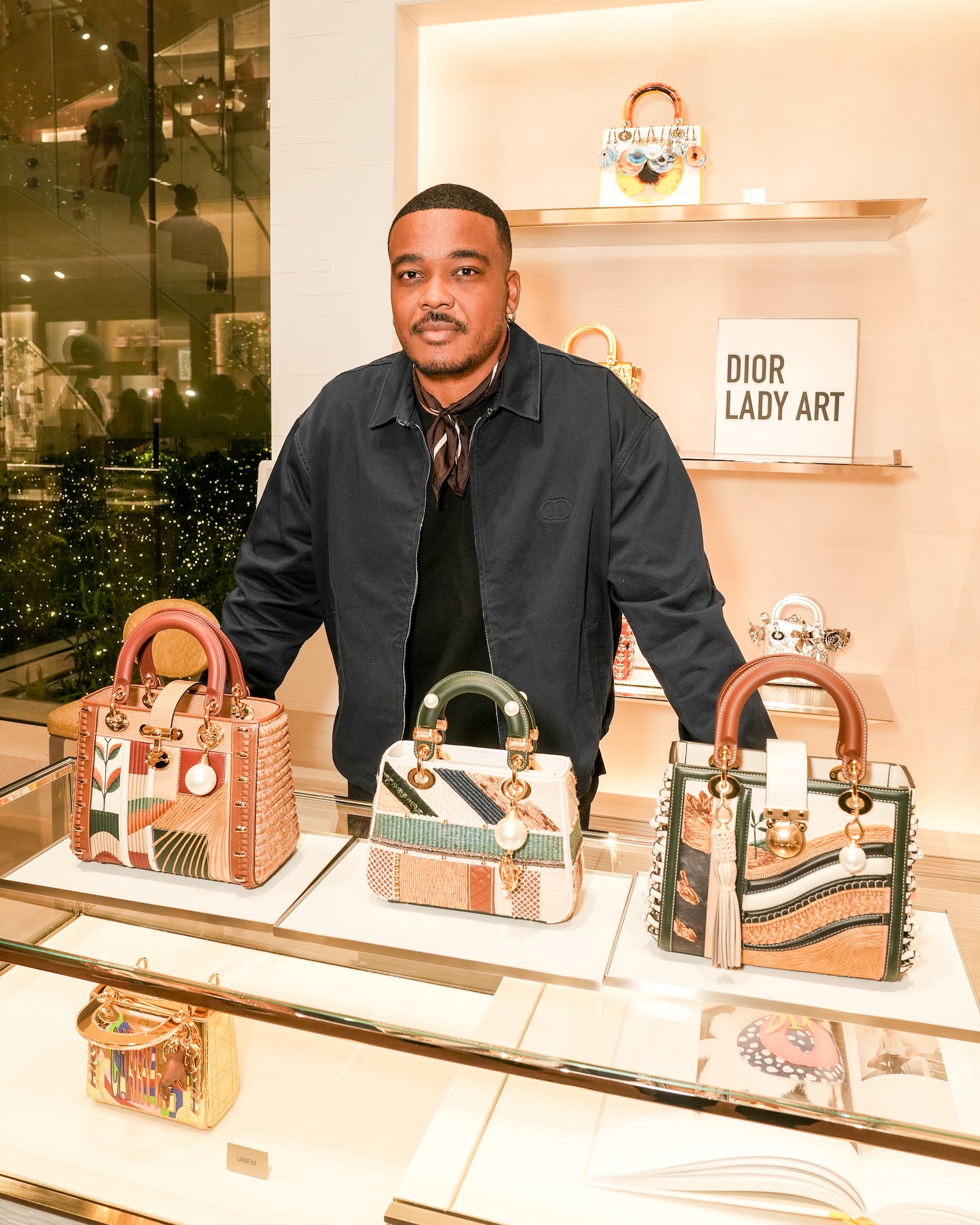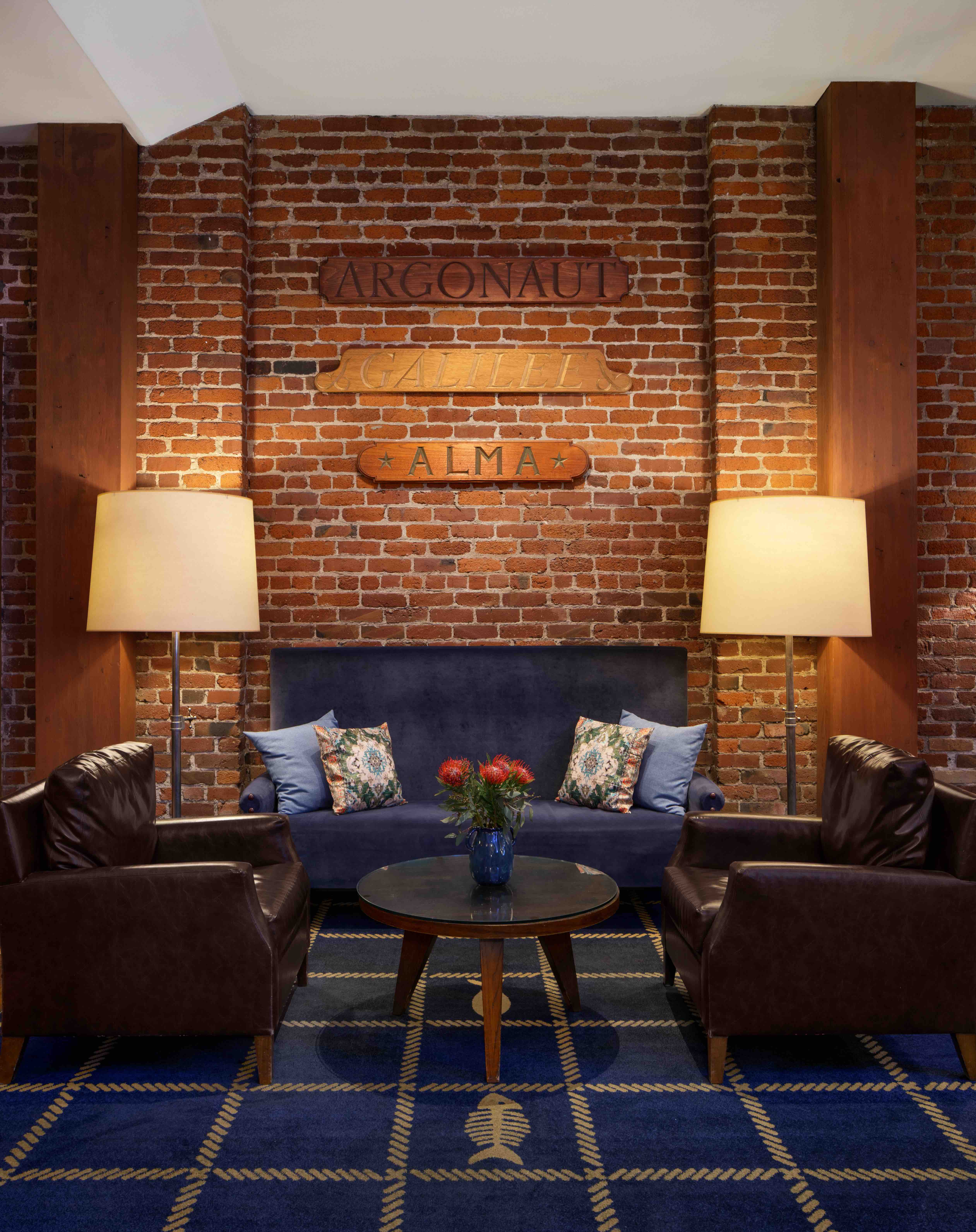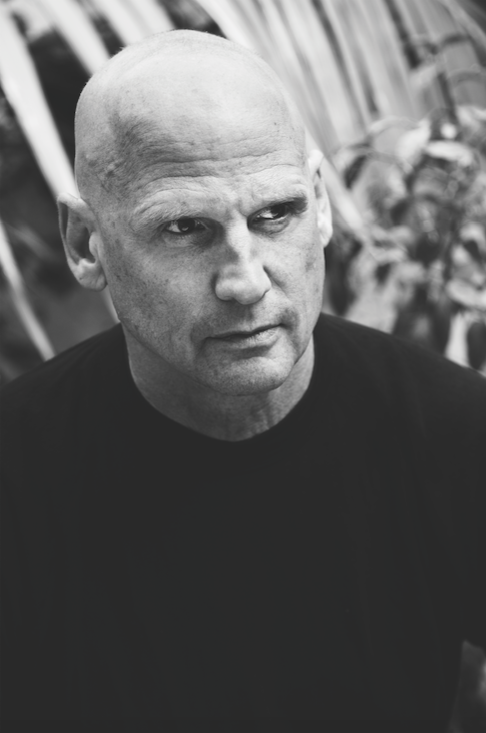

For whatever reason, galleries are designed to make you uncomfortable. This is a strange contradiction, for (though they are essentially commercial properties) galleries are meant to attract the general public. In fact, they do the very opposite by putting viewers on edge until they leave. Galleries even intimidate Perry Rubenstein, which, if we were to go on physicality, seems impossible. The cut of Rubenstein’s jib suggests unflappability—tall and muscular, and with a Vin Diesel-like bare head imposing in and of itself. Seated for lunch on the patio of a trendy restaurant tucked beneath a canopy of foliage on Robertson Boulevard, Rubenstein seems chilled out, in his element.
Rubenstein, a recent Los Angeles transplant, has designed his new gallery with a completely different gestalt, intending for the space to be a site of contemplation and conversation. Two galleries occupy 8,500 square feet, with a courtyard in between. The intention behind the design was “to create a space that is undeniable in that artists will have multiple reasons for wanting to exhibit there and very few, if any, for not, because the spaces are magnificent and they have no architectural restraints on any practice regarding its medium or scale. The courtyard is critical. For me, it’s not just to enjoy or embrace or embody the architecture of Los Angeles, but it’s so actually so that people will talk.” In a town where galleries are visited by driving from one to the next, Perry Rubenstein’s space is a destination gallery to where “you want to drive and stay,” he says.
For Rubenstein, the mere utterance of “Los Angeles” is loaded. The urban landscape inspires the creative process differently than in New York where it’s nearly impossible for artists to actually live and create without the enormous pressure and financial burden of trying to simply exist. Perhaps it’s the disparate space, the amicable climate, or the meditative nooks and crannies of the city, but Los Angeles is currently seeing a boom of art makers, as well as gallerists and art fairs. Rubenstein sensed this energy and decided to close his Chelsea gallery and head to the city of Angels, where the construction of his flagship space in Hollywood, designed by Kulapat Yantrasast of WHY Architecture, is nearly complete. Rubenstein’s trust in Los Angeles is unwavering—here he sees a gateway to the international marketplace, an environ that fosters creative energy and place that he and his family now call home.
“It’s fascinating that I’m always hearing about somebody ‘producing’ something,” he explains as he contemplates the overwhelming creativity extending from Silicon Valley to Hollywood. “The word itself is fundamental to how I think the city is developing, and \[it is\] arguably the creative capital of the world.” Los Angeles is a town based on the “production” of creative endeavors because there is ample space for the imagination to wander. The city also offers a different model for artists to live and work as Rubenstein explains, “I think that what we’ve seen is a generation that has developed subsequent John Baldessari, and even Mike Kelley and Cathy Opie, that has realized that they could work and continue to live and most critically get their voices heard through a global network of galleries and art fairs, which has made Los Angeles not only viable but also critical.” Furthermore, the function of art fairs in the city has brought attention to international voices so that the collective base here is exposed to international art without having to leave the comfortable confines of L.A. It is within those two concepts combined that Rubenstein sees his gallery filling a void. Drawing on decades of experience in the international marketplace, Rubenstein will draw on every resource and strategic alliance to bring established and less familiar voices to Los Angeles. While they have changed their address, Perry Rubenstein Gallery will continue to maintain a commitment to international artists.
But first, Rubenstein has an old L.A.-based score to settle. The inaugural exhibition is 40 large-scale black-and-white photographs from Helmut Newton, titled _Sex and Landscapes_, celebrating not only the female body, but also the barren cityscape of Los Angeles. Rubenstein describes Newtown’s photographs as evidence of “le camera stylo,” whereby, “He has the most singular voice of anybody who has ever picked up a camera. You can look at volumes of _Vogue_ and you can always identify a Newton. He had this facility and ability to make everything he looked at entirely his own.” Rubenstein’s promise to L.A. is that he’ll make his gallery similarly singular in identity, and Angelinos always welcome that sort of attitude. Snuggled in Hollywood, it seems as if Perry Rubenstein will fit right in.
Written by A. Moret Photographed by Damien Fry
 
For whatever reason, galleries are designed to make you uncomfortable. This is a strange contradiction, for (though they are essentially commercial properties) galleries are meant to attract the general public. In fact, they do the very opposite by putting viewers on edge until they leave. Galleries even intimidate Perry Rubenstein, which, if we were to go on physicality, seems impossible. The cut of Rubenstein’s jib suggests unflappability—tall and muscular, and with a Vin Diesel-like bare head imposing in and of itself. Seated for lunch on the patio of a trendy restaurant tucked beneath a canopy of foliage on Robertson Boulevard, Rubenstein seems chilled out, in his element.
Rubenstein, a recent Los Angeles transplant, has designed his new gallery with a completely different gestalt, intending for the space to be a site of contemplation and conversation. Two galleries occupy 8,500 square feet, with a courtyard in between. The intention behind the design was “to create a space that is undeniable in that artists will have multiple reasons for wanting to exhibit there and very few, if any, for not, because the spaces are magnificent and they have no architectural restraints on any practice regarding its medium or scale. The courtyard is critical. For me, it’s not just to enjoy or embrace or embody the architecture of Los Angeles, but it’s so actually so that people will talk.” In a town where galleries are visited by driving from one to the next, Perry Rubenstein’s space is a destination gallery to where “you want to drive and stay,” he says.
For Rubenstein, the mere utterance of “Los Angeles” is loaded. The urban landscape inspires the creative process differently than in New York where it’s nearly impossible for artists to actually live and create without the enormous pressure and financial burden of trying to simply exist. Perhaps it’s the disparate space, the amicable climate, or the meditative nooks and crannies of the city, but Los Angeles is currently seeing a boom of art makers, as well as gallerists and art fairs. Rubenstein sensed this energy and decided to close his Chelsea gallery and head to the city of Angels, where the construction of his flagship space in Hollywood, designed by Kulapat Yantrasast of WHY Architecture, is nearly complete. Rubenstein’s trust in Los Angeles is unwavering—here he sees a gateway to the international marketplace, an environ that fosters creative energy and place that he and his family now call home.
“It’s fascinating that I’m always hearing about somebody ‘producing’ something,” he explains as he contemplates the overwhelming creativity extending from Silicon Valley to Hollywood. “The word itself is fundamental to how I think the city is developing, and \[it is\] arguably the creative capital of the world.” Los Angeles is a town based on the “production” of creative endeavors because there is ample space for the imagination to wander. The city also offers a different model for artists to live and work as Rubenstein explains, “I think that what we’ve seen is a generation that has developed subsequent John Baldessari, and even Mike Kelley and Cathy Opie, that has realized that they could work and continue to live and most critically get their voices heard through a global network of galleries and art fairs, which has made Los Angeles not only viable but also critical.” Furthermore, the function of art fairs in the city has brought attention to international voices so that the collective base here is exposed to international art without having to leave the comfortable confines of L.A. It is within those two concepts combined that Rubenstein sees his gallery filling a void. Drawing on decades of experience in the international marketplace, Rubenstein will draw on every resource and strategic alliance to bring established and less familiar voices to Los Angeles. While they have changed their address, Perry Rubenstein Gallery will continue to maintain a commitment to international artists.
But first, Rubenstein has an old L.A.-based score to settle. The inaugural exhibition is 40 large-scale black-and-white photographs from Helmut Newton, titled _Sex and Landscapes_, celebrating not only the female body, but also the barren cityscape of Los Angeles. Rubenstein describes Newtown’s photographs as evidence of “le camera stylo,” whereby, “He has the most singular voice of anybody who has ever picked up a camera. You can look at volumes of _Vogue_ and you can always identify a Newton. He had this facility and ability to make everything he looked at entirely his own.” Rubenstein’s promise to L.A. is that he’ll make his gallery similarly singular in identity, and Angelinos always welcome that sort of attitude. Snuggled in Hollywood, it seems as if Perry Rubenstein will fit right in.
Written by A. Moret Photographed by Damien Fry

For whatever reason, galleries are designed to make you uncomfortable. This is a strange contradiction, for (though they are essentially commercial properties) galleries are meant to attract the general public. In fact, they do the very opposite by putting viewers on edge until they leave. Galleries even intimidate Perry Rubenstein, which, if we were to go on physicality, seems impossible. The cut of Rubenstein’s jib suggests unflappability—tall and muscular, and with a Vin Diesel-like bare head imposing in and of itself. Seated for lunch on the patio of a trendy restaurant tucked beneath a canopy of foliage on Robertson Boulevard, Rubenstein seems chilled out, in his element.
Rubenstein, a recent Los Angeles transplant, has designed his new gallery with a completely different gestalt, intending for the space to be a site of contemplation and conversation. Two galleries occupy 8,500 square feet, with a courtyard in between. The intention behind the design was “to create a space that is undeniable in that artists will have multiple reasons for wanting to exhibit there and very few, if any, for not, because the spaces are magnificent and they have no architectural restraints on any practice regarding its medium or scale. The courtyard is critical. For me, it’s not just to enjoy or embrace or embody the architecture of Los Angeles, but it’s so actually so that people will talk.” In a town where galleries are visited by driving from one to the next, Perry Rubenstein’s space is a destination gallery to where “you want to drive and stay,” he says.
For Rubenstein, the mere utterance of “Los Angeles” is loaded. The urban landscape inspires the creative process differently than in New York where it’s nearly impossible for artists to actually live and create without the enormous pressure and financial burden of trying to simply exist. Perhaps it’s the disparate space, the amicable climate, or the meditative nooks and crannies of the city, but Los Angeles is currently seeing a boom of art makers, as well as gallerists and art fairs. Rubenstein sensed this energy and decided to close his Chelsea gallery and head to the city of Angels, where the construction of his flagship space in Hollywood, designed by Kulapat Yantrasast of WHY Architecture, is nearly complete. Rubenstein’s trust in Los Angeles is unwavering—here he sees a gateway to the international marketplace, an environ that fosters creative energy and place that he and his family now call home.
“It’s fascinating that I’m always hearing about somebody ‘producing’ something,” he explains as he contemplates the overwhelming creativity extending from Silicon Valley to Hollywood. “The word itself is fundamental to how I think the city is developing, and \[it is\] arguably the creative capital of the world.” Los Angeles is a town based on the “production” of creative endeavors because there is ample space for the imagination to wander. The city also offers a different model for artists to live and work as Rubenstein explains, “I think that what we’ve seen is a generation that has developed subsequent John Baldessari, and even Mike Kelley and Cathy Opie, that has realized that they could work and continue to live and most critically get their voices heard through a global network of galleries and art fairs, which has made Los Angeles not only viable but also critical.” Furthermore, the function of art fairs in the city has brought attention to international voices so that the collective base here is exposed to international art without having to leave the comfortable confines of L.A. It is within those two concepts combined that Rubenstein sees his gallery filling a void. Drawing on decades of experience in the international marketplace, Rubenstein will draw on every resource and strategic alliance to bring established and less familiar voices to Los Angeles. While they have changed their address, Perry Rubenstein Gallery will continue to maintain a commitment to international artists.
But first, Rubenstein has an old L.A.-based score to settle. The inaugural exhibition is 40 large-scale black-and-white photographs from Helmut Newton, titled _Sex and Landscapes_, celebrating not only the female body, but also the barren cityscape of Los Angeles. Rubenstein describes Newtown’s photographs as evidence of “le camera stylo,” whereby, “He has the most singular voice of anybody who has ever picked up a camera. You can look at volumes of _Vogue_ and you can always identify a Newton. He had this facility and ability to make everything he looked at entirely his own.” Rubenstein’s promise to L.A. is that he’ll make his gallery similarly singular in identity, and Angelinos always welcome that sort of attitude. Snuggled in Hollywood, it seems as if Perry Rubenstein will fit right in.
Written by A. Moret Photographed by Damien Fry

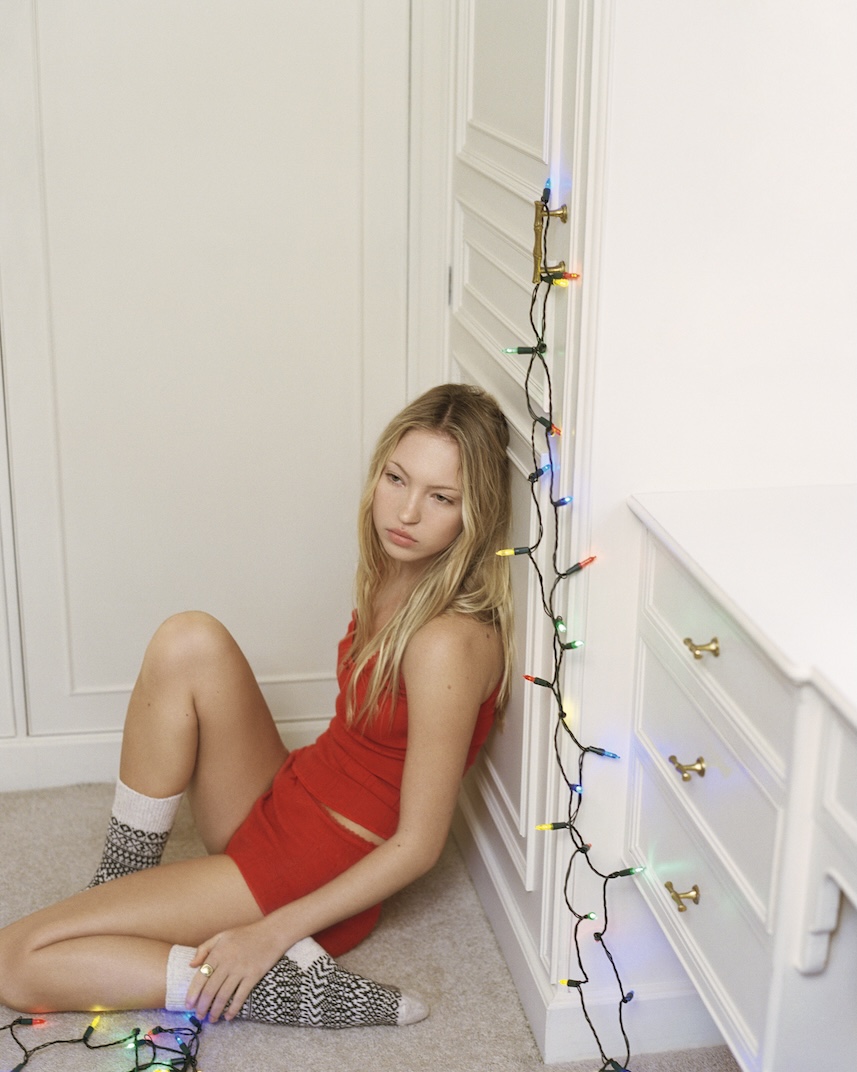
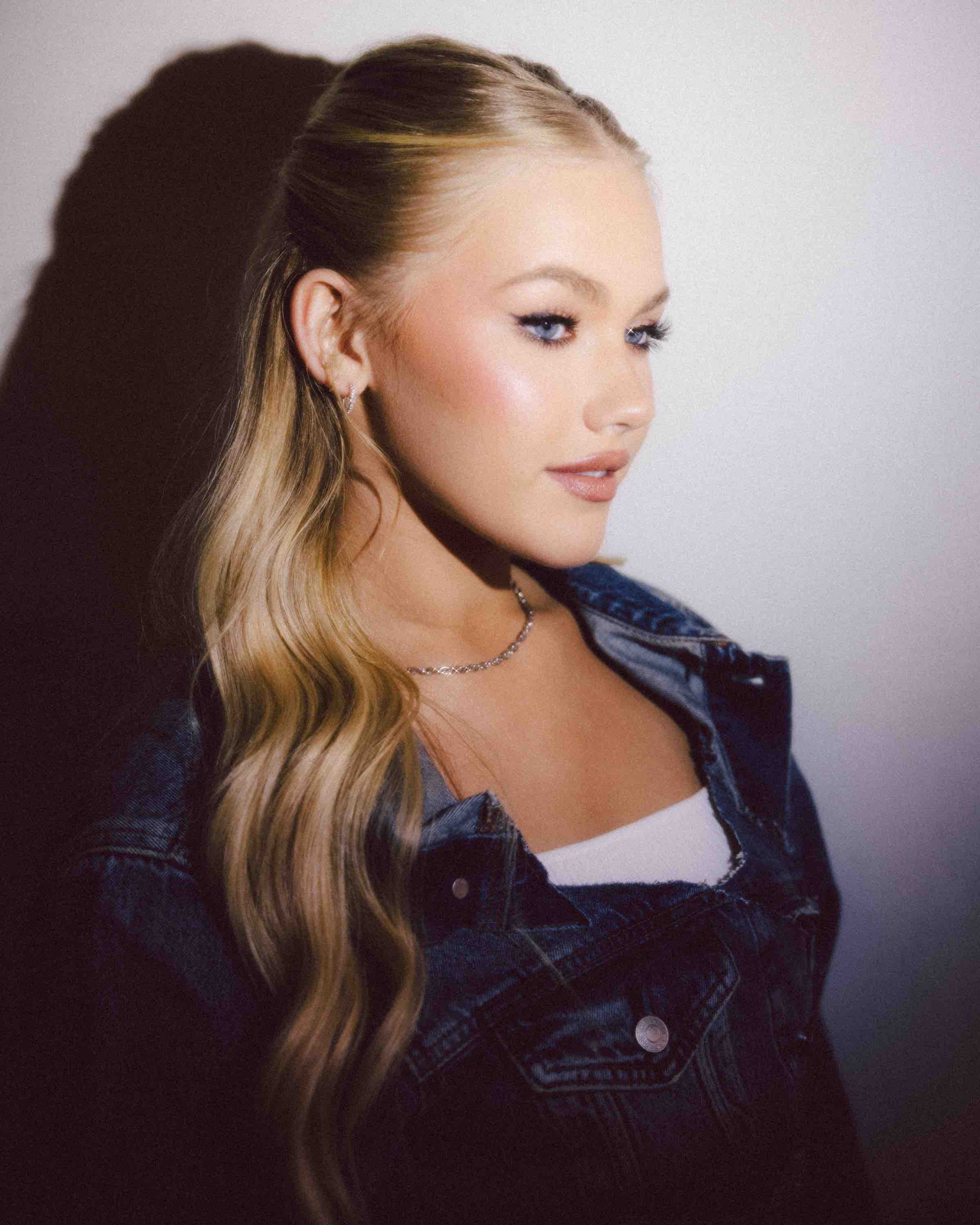
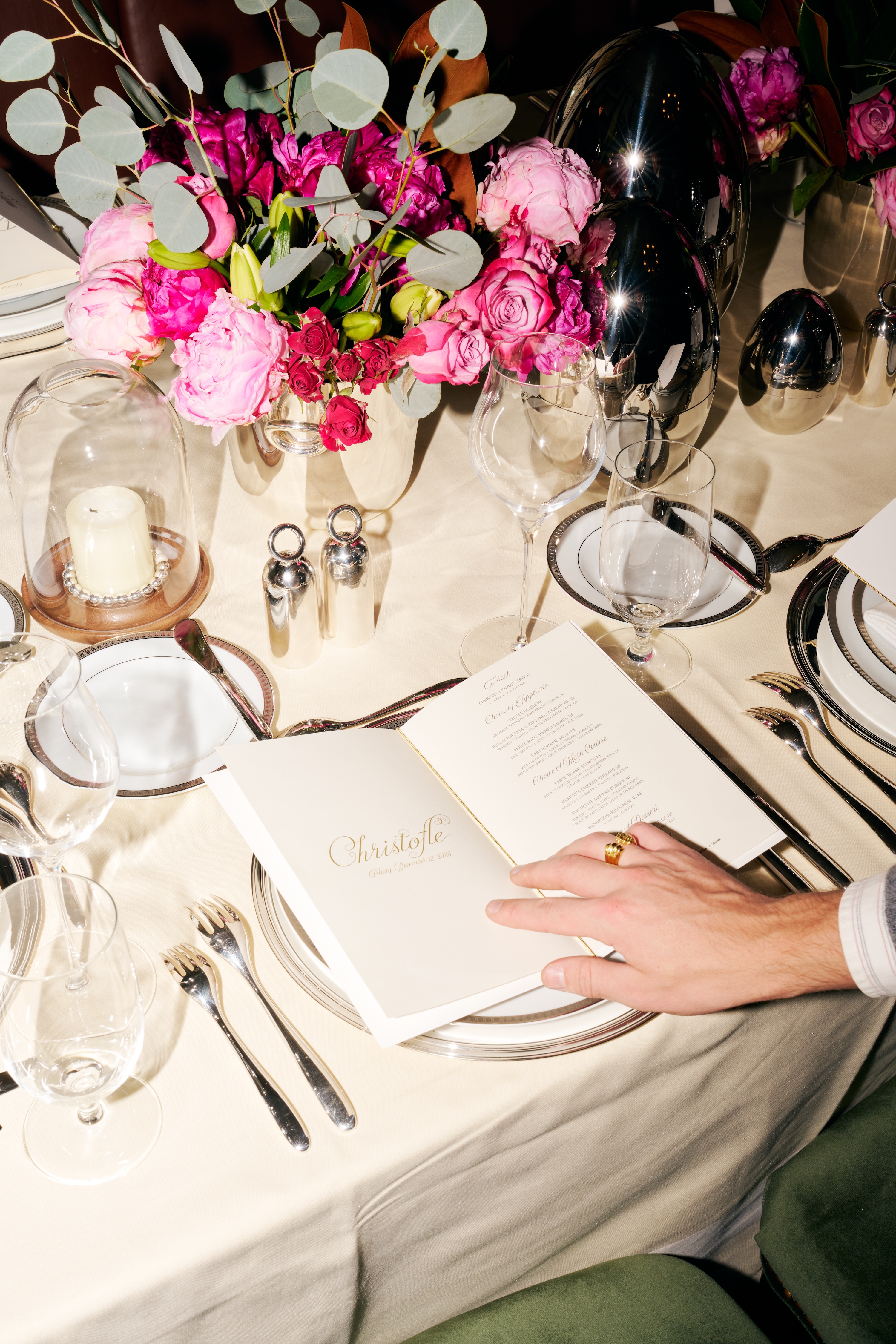


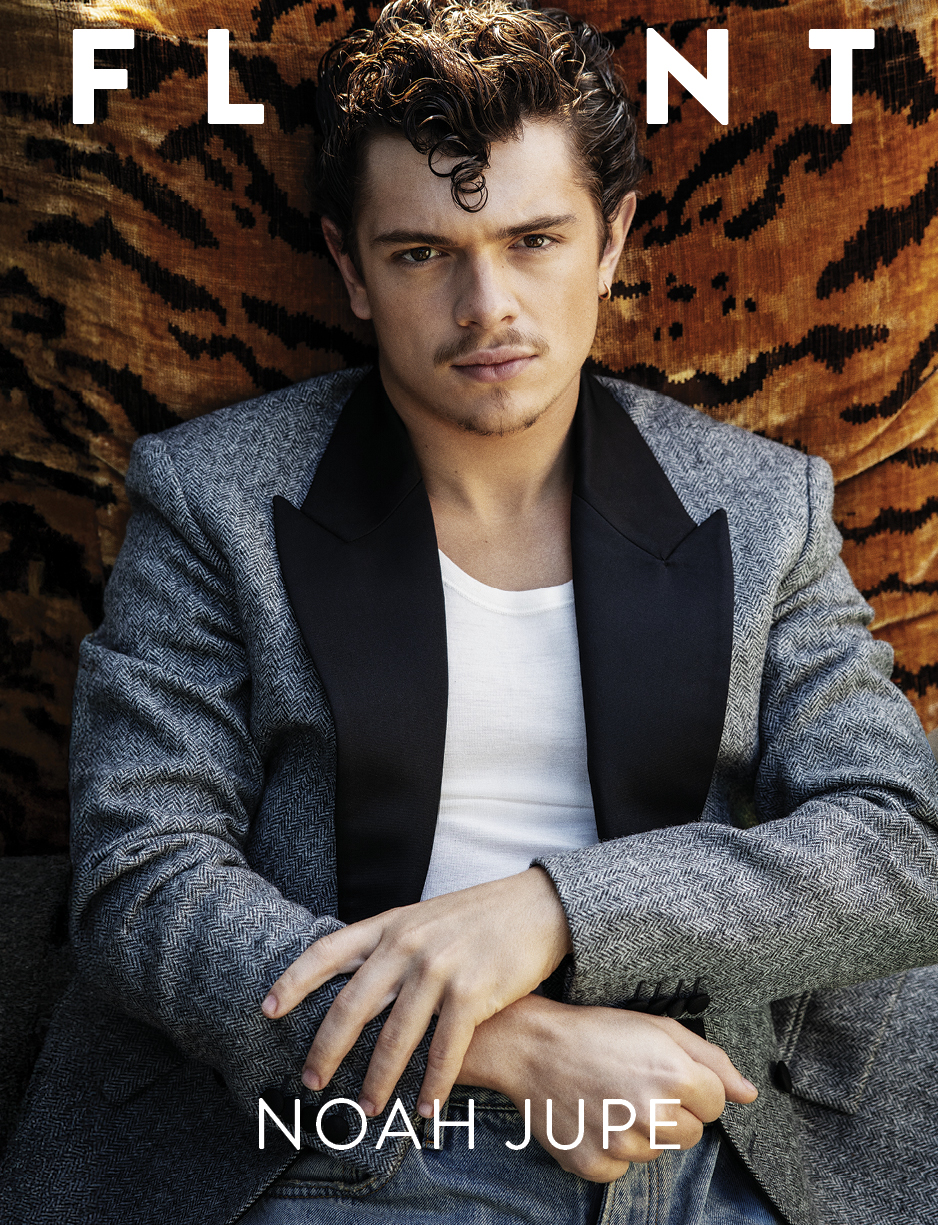

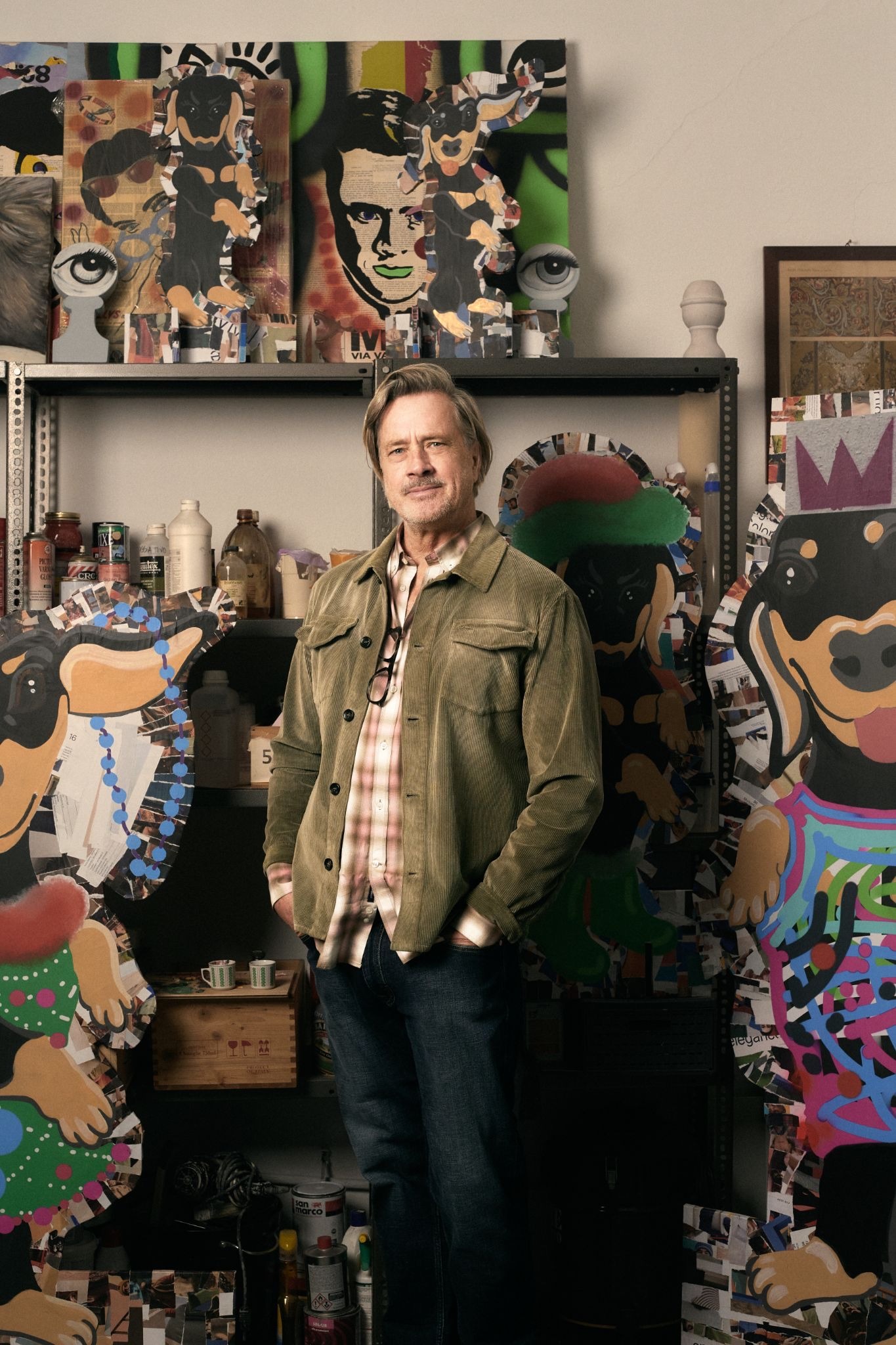
.JPG)
.jpg)
